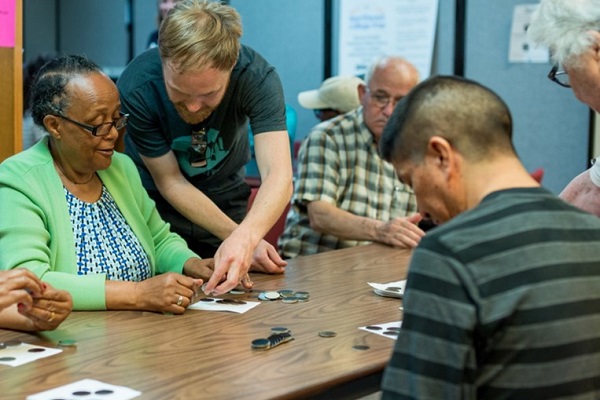- MN ABE Connect
- Archive
- The Power of Volunteers to Solve Classroom Challenges
 May 2, 2014
May 2, 2014
The Power of Volunteers to Solve Classroom Challenges
Burgen Young, ESL Training CoordinatorWhen I was a new teacher, the program’s volunteer coordinator sent a volunteer to help in my class once a week. I wasn’t sure what to ask her to do. I already had a routine figured out that worked without her there. I struggled to find meaningful work for her to do.
As I reflected more, I realized that although my class was functioning fine, I faced some challenges. I was busy. My students had a multitude of needs. There were great activities that I wasn’t able to do because I couldn’t be in two places at once. I began to realize that there might be a vital role for volunteers in my class after all.
Could volunteers help you solve some of your classroom challenges? Ask yourself, “What’s not working as smoothly as I’d like it to?” “How could I serve my students better?” What would I like to be able to do that I am not currently doing?” Once you have identified your challenges, consider how volunteers could be part of the solution. Here are a few examples:
1. Classroom Challenge: Class-time Chaos
A welcoming classroom environment improves student persistence. However, teachers are often busy getting things ready for the lesson and dealing with the last-minute emergencies that often arise right before class. Without help, students struggle to get signed in, find their materials and get ready for the first activity. The lesson gets off to a rocky start and everyone feels stressed out.
» Volunteer Solution: Classroom Greeter
Who better than an enthusiastic volunteer to provide that warm welcome? This frees the teacher up to take care of more administrative tasks at the beginning of class. The more specific the instructions for the volunteer, the better. For example, the volunteer can greet students by name, help them sign in, and remind students to read the board to get instructions for the warm up activity.
2. Classroom Challenge: Multi-Level Classrooms
Most classes are multi-level in some way. Differentiating instruction is very labor-intensive. As a result, the higher-level students get bored and the lower-level students get lost.
» Volunteer Solution: Small Group Leader
Volunteers allow teachers to break classes into two or more groups. Volunteers can then help the least-needy group while the teacher helps the students who require more attention.
3. Classroom Challenge: Cell Phones!
Students’ cell phones keep ringing during class and they don’t know how to shut them off.
» Volunteer Solution: Cell Phone Helper
A class lesson on the topic is impractical since everyone’s phone works differently. A volunteer can spend a few minutes problem solving with an individual to teach him/her how to use important functions.
What challenges do you have that a volunteer could help address? In future editions of this newsletter, we will be providing additional examples of how Minnesota ABE teachers have used volunteers to solve classroom challenges.
Get a quick list of possible ways to use volunteers in the classroom >>

Newsletter Signup
Get MN ABE Connect—the official source for ABE events, activities, and resources!
Sign UpArticle Categories
- ABE Foundations/Staff Onboarding
- ACES/Transitions
- Adult Career Pathways
- Assessment
- CCR Standards
- Citizenship
- COVID-19
- Cultural Competency
- Digital Literacy/Northstar
- Disabilities
- Distance Learning/Education
- ELA
- Equity/Inclusion
- ESL
- HSE/Adult Diploma
- Listening
- Math/Numeracy
- Mental Health
- Minnesota ABE
- One-Room Schoolhouse/Multilevel
- Professional Development
- Program Management
- Reading
- Remote Instruction
- Science
- Social Studies
- Speaking/Conversation
- Support Services
- Teaching Strategies
- Technology
- Uncategorized
- Volunteers/Tutors
- Writing